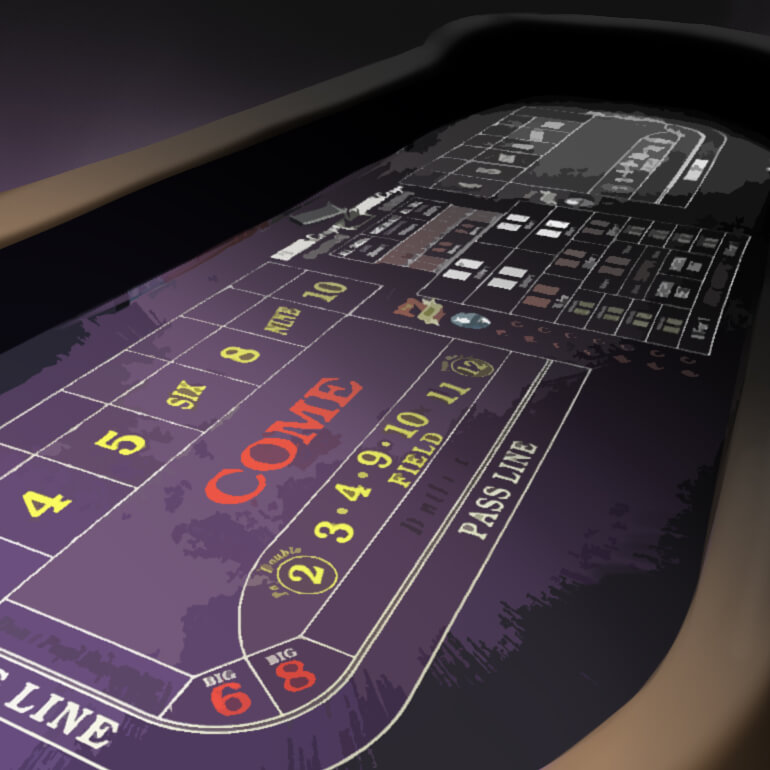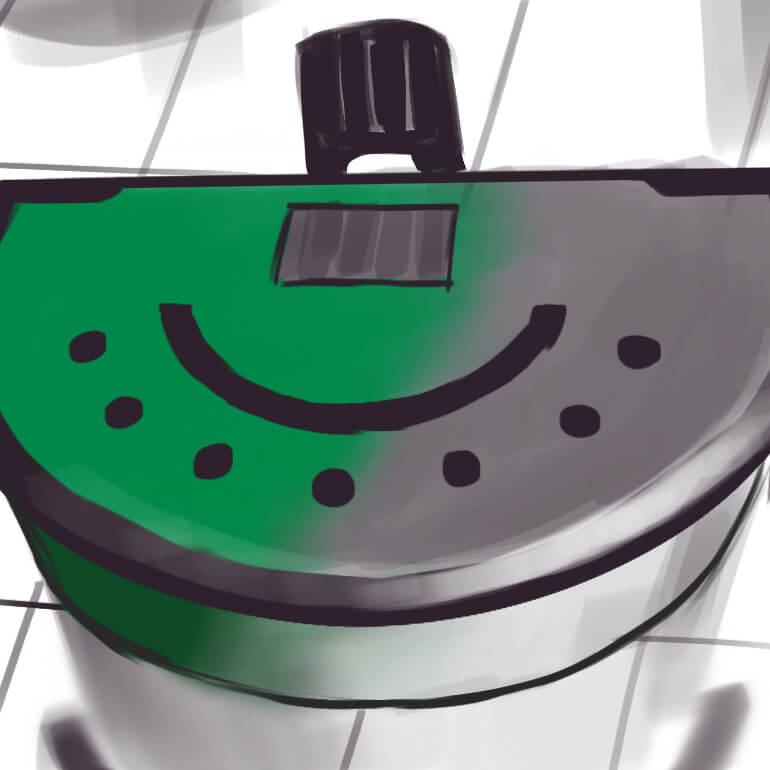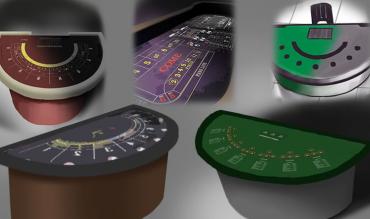Even the oldest table games can have new wrinkles, and roulette, craps and blackjack are some of the longest-running player favorites.
Regardless of whether you're playing at an online casino or a live casino, you're playing games with a lot of history.
Modern roulette wheels, complete with 0 and 00, were used in Paris in the late 1700s. Craps has evolved over the centuries and is said to descend from a game called "hazard" that was played by British knights in the Crusades in the 1100s. Blackjack had a number of European precursors, but its direct lineage seems traceable to vingt-et-un, or 21, in France circa 1700.
The games are still evolving, with new bets and side bets introduced almost every year.
Let's look at three recent additions. You won't find them everywhere just yet. It takes time for new wagers to build a following and convince more casinos to give then a try. They spread faster in online casinos than in live casinos, which have different space requirements and investments in equipment.
For each of these options, here's how they work and how they affect your chance of winning.
CRAPS
Muggsy's Corner is designed to replace the Big 6 and Big 8 bets on the corners of craps tables.
Those bets can do with some replacing. They work the same way as place bets on 6 and 8, but they pay less. If you bet on Big 6 or place 6, you win if the shooter rolls a 6 and lose if the shooter rolls a 7. Big 8 and place 8 work the same way with 8s instead of 6s. Problem: Big 6 and Big 8 pay even money, but place 6 and place 8 pay at 7-6 odds provided you bet in multiples of $6. House edges are 9.09 percent on the "Bigs," but only 1.52 percent on the place bets.

With those numbers, there is no reason to bet Big 6 or Big 8.
If you take those bad bets off the table, what do you do with the space?
One potential solution is Muggsy's Corner.
Muggsy's Corner is a one or two-roll bet with a 5.56-percent house edge. That's the same as the edge on the field when both 2 and 12 pay 2-1
On the comeout roll, Muggsy's Corner wins if the shooter rolls a 7 and loses if the roll is 2, 3, 11 or 12. That's six ways to win -- six of the 36 possible rolls of two dice total 7 - and six ways to lose with one way to make 2, two to make 3, two to make 11 and one to make 12.
Winners on the comeout are paid 2-1.
If the comeout roll is 4, 5. 6, 8, 9 or 10, the Muggsy's Corner bet stays in place. If the next roll is a 7, Muggsy's Corner bettors win and are paid at 3-1 odds. All other rolls lose, so on that second chance there are still six ways to win but 30 ways to lose.
You'll average a first-roll win once per six times you make the bet and a second-roll win once per nine times. Overall, you'll win 27.78 percent of your bets and the house will win 72.22 percent. The 2-1 payoff on a first-roll win and 3-1 on a second-roll win mean your average return is 94.44 percent of your wagers while the house keeps 5.56 percent.
ROULETTE
A new bet called 2G's gives you a chance at a 350-1 payoff in two spins of the wheel. You win if the winning number is either 0 or 00 on consecutive spins.
Designed for a double-zero wheel, 2G'$ has a 2.77 percent house edge. That's a lower edge than other bets at double-zero wheels, where the edge is 5.26 percent on all wagers except the 7.89 percent on the five-number basket of 0, 00, 1, 2 and 3.
Judging strictly by house edge, 2G'$ is a rarity in being more favorable for players than the main game. However, there's a lot of volatility built into results. While a single-number bet will win an average of once per 38 spins, and an 18-number bet such as red or black once per 2.1 spins, 2G'$ will win an average of only once per 361 spins.
Here's the way it works. There are 38 numbers including 0 and 00 on a double-zero roulette wheel. To calculate the number of possible two-spin outcomes, multiply 38 by itself, and you get 1,444.
Four possible outcomes are winners: 0 on the first spin and 0 on the second; 0 first and 00 second; 00 first and second; or 00 first and 0 second.
Divide the four winners and the 1,444 total possibilities each by four, and you have an 1 in 361 chance of winning.
If you bet $1 on each of 361 spins, you'd risk $361. On average, you'd win once to collect $350 in winnings and keep your $1 bet. That would give the house a $10 profit for the sequence.
Divide the $10 house profit by the $361 wagered, then multiply by 10 to convert to percent, and you get a 2.77 percent house edge.
BLACKJACK
Match the Dealer has been around a little longer than Muggsy's Corner or 2G's and it's a little easier to find, though it's not a casino staple just yet.
It's a side bet to designed for either blackjack or the blackjack variation Spanish 21. Payoffs and odds can vary between the two games because Spanish 21 is played with multiple 48-card decks instead of 52, with the 10-spots removed.

You win if either of your first two cards matches the dealer's face-up card in rank. There's a bigger payoff if you match the dealer in both rank and suit.
In standard blackjack, payoffs on an unsuited match are 4-1 if the game is using two, four or six decks. The payoff decreases to 3-1 if five or eight decks are in play.
There's a bigger return if you match the dealer in the same suit. Then payoffs are 19-1 with two decks, 14-1 with four, 15-1 with five, 11-1 with six and 14-1 with eight.
Four and five decks are mainly seen in live casinos that use automatic continuous shufflers. In online casinos, four- and five-deck games are very rare.
House edges are 3.3 percent with two decks, 4.8 with four or five, 4.1 with six and 3.7 with eight.
That's better than many side bets but not as favorable as the main game where basic strategy can cut the edge to less than 1 percent.
That makes Match the casino dealer a bet for players who like the thrill of chasing a bigger one-hand payoff than you can get on the main game.
The same goes for Spanish 21, where blackjack basic strategy players also can cut the edge to less than 1 percent on the main game.
Spanish 21 is dealt with six or eight 48-card decks. With six decks, payoffs are 4-1 on unsuited matches and 9-1 on suited matches. Eight-deck payoffs are 3-1 if the match unsuited and 12-1 if suited.
House edges are 3.1 percent with six decks and 3.0 with eight, making Match the Dealer a bit better in Spanish 21 than in standard blackjack.
Either way, Match the Dealer gives players new ways to chase bigger payoffs as centuries-old casino games continue to add new wrinkles.


